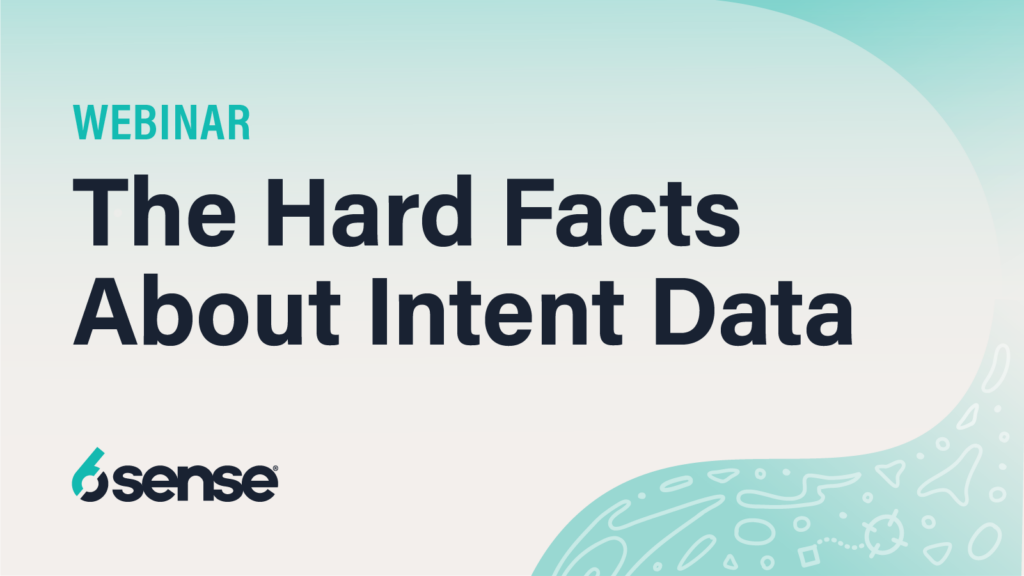Have you ever grappled with the frustration of sending duplicate messages to the same customer in an email campaign due to outdated contact information?
Data hygiene problems like this one are more than just operational nuisances. They squander your team’s time, resources, and talent.
Dirty data comes with severe consequences, such as reduced sales efficiency, sluggish sales cycles, lost revenue opportunities, and damaged brand reputation. It can even go against government compliance and put your organization at legal risk.
If you want to know how to ensure your data remains a valuable asset rather than a liability, this guide provides practical insights and step-by-step instructions to understand data hygiene and the data cleansing process.
You’ll learn:
- The risks and financial consequences of “dirty” data
- How to define data hygiene, data quality, and data integrity
- A step-by-step process to efficiently and effectively clean up your data
- The characteristics of several data cleansing methods
- Best practices for data cleansing
- How data cleansing efforts can lead to a 157% increase in average opportunity value
What is Data Hygiene?
Data hygiene is the practice of maintaining and ensuring the cleanliness and quality of data within an organization’s databases. It involves the processes and strategies implemented to correct, standardize, and eliminate data inaccuracies, redundancies, and inconsistencies.
The Risk of ‘Dirty Data’
Every sales and marketing strategy depends on data. These efforts can easily become inefficient and even downright meaningless if the data becomes “dirty” — meaning it’s incorrect, incomplete, outdated, duplicated, or improperly formatted.
Using dirty data leads to:
- Misguided business decisions
- Lost opportunities
- Wasted time hunting down the correct information
- Wasted effort reaching out to the wrong contacts
- Compromised customer relationships
- Damaged brand reputation
- Compliance and legal risks
And ultimately, it can hurt your bottom line. Research on the consequences of “dirty data” has found that it can cost companies up to 12% of overall revenue.
Data Hygiene vs. Data Quality and Data Integrity
While the terms “data hygiene,” “data quality,” and “data integrity” are often used interchangeably, it’s essential to understand their unique meanings in the context of data management.
Data Hygiene
This term primarily focuses on the processes and practices that ensure the cleanliness of data. Data hygiene involves routine checks and maintenance activities to keep data accurate, consistent, and free of errors. It includes identifying and correcting inaccuracies, removing duplicates, and updating data.
Data Quality
Data quality is a broader concept that encompasses various attributes of data, including accuracy, completeness, consistency, reliability, and relevance. It refers to the overall suitability of data to serve its intended purpose. Data quality is not just about cleansing data (as in data hygiene) but also about the processes of data collection, storage, and management to ensure the data is fit for its intended use.
Data Integrity
This term refers to the accuracy and consistency of data over its lifecycle. Data integrity ensures that data isn’t altered or degraded as it is used and moved from one system to another. It involves maintaining and assuring the accuracy and consistency of data, and includes adherence to data governance standards and practices. This encompasses aspects like data security, compliance with regulations, and audit trails to track changes to the data.
Data Cleansing Process
Here’s a step-by-step process to data cleansing that’s efficient, effective, and can be tailored to your organization’s unique needs.
Step 1: Data Assessment
Carry out a comprehensive assessment of your data to identify inconsistencies, errors, and anomalies within your datasets, such as:
Duplicate Records: Identical records that represent the same entity but are present multiple times, potentially with slight variations that make them difficult to consolidate.
Outdated Information: Records that haven’t been updated to reflect recent changes, such as a contact’s new job position, a company’s change of address, or updated industry codes.
Incorrect Information: Data entries that are factually wrong, such as outdated contact details, misspelled names, or incorrect company affiliations.
Incomplete Records: Data records that are missing critical information, such as email addresses, phone numbers, or demographic details, which can hinder communication efforts and analytics.
Inconsistent Formatting: Variability in how data is recorded, such as dates (DD/MM/YYYY vs. MM/DD/YYYY), addresses (abbreviations vs. full words), and phone numbers (with or without country codes), which can lead to challenges in sorting, filtering, and analyzing the data.
Irrelevant or Redundant Data: Data that doesn’t serve a current need or purpose, including information that’s no longer relevant.
Mismatched Data Types: Errors that occur when data fields are populated with the wrong type of data, such as numerical values in text fields or vice versa. These can cause issues in data processing and analysis.
Foreign or Special Characters: The presence of unexpected characters, especially in datasets not originally designed to support them, which can cause encoding errors or issues in data processing.
Anomalies and Outliers: Unusual data points that deviate significantly from the norm and may indicate data entry errors, fraudulent activity, or other significant issues requiring further investigation.
Once you gain a clear understanding of the scope of cleansing required, you can take corrective action.
Step 2: Standardization and Normalization of Data Formats
Establish consistency and uniformity in the format and structure of information like dates, phone numbers, and addresses, and make sure all entries adhere to these rules.
This enhances data clarity and improves the efficiency of targeted marketing campaigns and geographical analysis.
Step 3: Removal of Duplicates and Outdated Records
Duplicate and outdated entries can result from various sources such as data imports, manual entries, or system errors. These types of entries not only distort analytics but also waste valuable resources and storage capacity.
Identifying and removing duplicate and outdated records streamlines customer databases, ensuring accuracy in customer information and optimizing resource allocation.
Step 4: Validation and Verification of Data Accuracy
The validation and verification phase in the data cleansing process acts as the final assurance checkpoint, ensuring the accuracy and reliability of the refined dataset.
This step involves cross-referencing information against trusted external sources or predefined criteria to confirm its accuracy. This rigorous process ensures the data is current and reliable, minimizing the risk of using outdated or erroneous details in crucial business interactions.
Data Cleansing Methods
Following the above steps to cleanse your data manually can be time-consuming, labor-intensive, and prone to human error. A manual approach is inefficient and often impractical for handling large datasets with numerous complexities. We don’t recommend it.
Fortunately, there are two other data cleansing methods you can consider:
- Automated data cleansing software tools and
- Outsourcing data cleansing services.
Either of those methods will significantly enhance the efficiency and accuracy of the data cleansing process.
Which one should you choose? Let’s go over the pros and cons.
Automated Data Cleansing Software Tools
Pros:
- Speed and Efficiency. Automated tools can process large volumes of data rapidly. This speed is essential for organizations dealing with massive datasets and tight deadlines.
- Consistency. Automated processes follow predefined rules consistently, minimizing the risk of human error. This uniform treatment of data enhances the overall data quality.
- Cost-Effectiveness. Once implemented, automated tools operate with minimal additional cost. This can be cost-effective compared to the resources required for manual cleansing or outsourcing.
Cons:
- Lack of Contextual Understanding. Automated tools can’t always grasp the nuanced context of certain data anomalies, leading to potential misinterpretations or overlooking specific errors that a human might catch.
- Upfront Implementation Challenges. Integrating automated tools into existing systems can be complex and require skilled personnel. Initial setup and configuration may pose challenges for organizations unfamiliar with the technology.
- Limited Customization. Automated tools may have limitations in adapting to unique data cleansing requirements, and a lack of customization may make it inadequate for the needs of your organization.
Outsourced Data Cleansing Services
Pros:
- Expertise and Specialization. Outsourcing to dedicated data cleansing services brings specialized expertise, such as a thorough understanding of diverse data types and industry-specific requirements.
- Scalability. External service providers can scale their operations according to the size and complexity of the dataset. This scalability is advantageous for organizations dealing with fluctuating data volumes.
- Focus on Core Competencies. Outsourcing allows in-house teams to concentrate on core business functions, leaving the tedious task of data cleansing to professionals.
Cons:
- Cost Considerations. While outsourcing can be cost-effective, it may still come with a high price tag for some organizations. The financial implications should be carefully weighed against the benefits.
- Data Security Concerns. Entrusting sensitive data to external parties raises security concerns. Organizations must select a service provider carefully that adheres to robust security measures and compliance standards.
- Communication Challenges. Miscommunication or a lack of alignment in expectations can occur when working with external partners. Clear communication channels and well-defined requirements are essential to avoid misunderstandings during the data cleansing process.
How to Do Data Cleansing: Best Practices
If you decide to use software to meet your data cleansing needs, we recommend following these best practices for a seamless and effective data cleansing process.
Choose the Right Data Cleansing Tools and Software
When considering data cleansing tools, look for solutions that act as central repositories for data and facilitate enhancing data quality.
For instance, platforms such as 6sense not only provide a consolidated view of your data, but also actively contribute to the improvement of data accuracy by identifying inconsistencies and filling in data gaps.
This constant cleansing and updating keeps data reliable, reducing the likelihood of errors and redundancies.
Establishing Data Cleansing Workflows and Schedules
Effective data cleansing doesn’t just happen once. It requires continuous workflows and regular schedules to maintain the integrity of your data.
Data ages rapidly. That means frequent updates, ideally in real-time, are essential.
To achieve this, make sure all your data sources are kept in your Customer Relationship Management (CRM) system, creating a centralized hub for up-to-date information.
Educate and Train Employees on Data Hygiene
Employees across different departments interact with data daily, and their understanding of data hygiene principles directly influences the overall health of organizational data.
Training should cover the basics of data hygiene, emphasizing the significance of accurate data entry, recognizing and rectifying errors, and adhering to established data quality standards. Training sessions should also include practical demonstrations on using data cleansing tools and following established workflows.
Also, ensure employees know the potential consequences of poor data hygiene, such as inaccurate reporting, flawed decision-making, compromised customer relationships, and possible legal repercussions.
Establish Data Governance Policies
Data governance policies serve as a framework that outlines procedures and responsibilities for managing and safeguarding data throughout its lifecycle.
These policies should clearly define ownership, access controls, and data quality standards. Specifying roles and responsibilities holds individuals and teams accountable for maintaining the accuracy and reliability of data within their scope.
Data governance policies also contribute to regulatory compliance, ensuring data handling aligns with your organization’s industry standards and legal requirements.
Regularly Audit Your Data
Conducting periodic audits is a proactive measure to guarantee compliance with the data governance policies set.
As you audit your data, check for accuracy, completeness, and consistency against your predefined standards. This safeguards against inaccuracies or outdated information infiltrating your dataset and keeps the data you work with reliable for analytics and decision-making.
Monitor and Measure the Success of Data Cleansing Efforts
Regularly tracking the quality and accuracy of your data empowers you to spot areas for improvement and assess the success of your cleansing strategies.
Keep an eye on critical metrics like data accuracy rates, reduction in duplicates, and the speed of data updates to gain insights into the overall health of your data and the effectiveness of your cleansing efforts.
A Data Hygiene Case Study
Let’s look at a case study that demonstrates the impact of data cleansing.
Zywave’s Challenge
In 2021, Zywave turned to 6sense for help with its account-based marketing (ABM) strategy, seeking unique, product-driven approaches tailored to each sales segment.
The implementation of ABM and the 6sense platform revealed a pressing issue — Zywave’s database was riddled with inaccuracies.
The root of Zywave’s data challenges stemmed from several sources:
Acquiring Companies. Zywave’s acquisition of nine companies in four years expanded its database significantly. This rapid expansion led to a large, cumbersome customer database.
Mismarking Opportunities. The revenue team’s practice of creating and closing opportunities on the same day muddled the understanding of buying journey stages, impeding the effectiveness of their strategies.
Inaccurate Categorization of Accounts. Independent insurance brokers associated with larger agencies were inaccurately listed within Zywave’s database. Despite working with larger agencies, these brokers fell under a different ideal customer profile, hindering personalized marketing efforts.
Recognizing the magnitude of these challenges, Zywave understood the urgent need for data cleansing to enhance their marketing strategies and deliver more accurate and personalized experiences to their various customer types.
Zywave’s Data Cleansing Solution
Zywave kicked off a comprehensive data cleansing process, rectifying mismarked opportunities, re-categorizing individual insurance brokers, and making sure missing links were included in their Salesforce records.
Leveraging the capabilities of 6sense orchestrations and segments, Zywave’s team strategically organized individual brokers under appropriate national insurance chains. Filling in missing information empowered their revenue team to harness the full potential of 6sense’s targeted advertising capabilities.
The Results
Zywave’s usage of 6sense’s data cleansing and enriching capabilities yielded remarkable results, significantly impacting key performance indicators and promoting a cultural shift within the organization.
Zywave experienced substantial improvements in its financial metrics, including:
- 157% increase in the average opportunity value
- 136% surge in the average deal value
- 126% rise in win rates
Beyond the financial gains, Zywave’s leadership observed an increased awareness and alignment around data hygiene practices within the team.
By proactively cleansing their database, Zywave garnered greater team buy-in, paving the way for expanded use of data to inform decision-making across various functions.
Conclusion
Effective data hygiene is the cornerstone for reliable data management and informed decision-making. A commitment to maintaining clean, accurate data has profound implications for organizational growth and strategic excellence.
To unlock these benefits within your organization, take the first step by implementing the data hygiene practices shared in this guide. Also consider leveraging tools like 6sense to automate time-intensive processes, scale your efforts, and elevate data quality.






